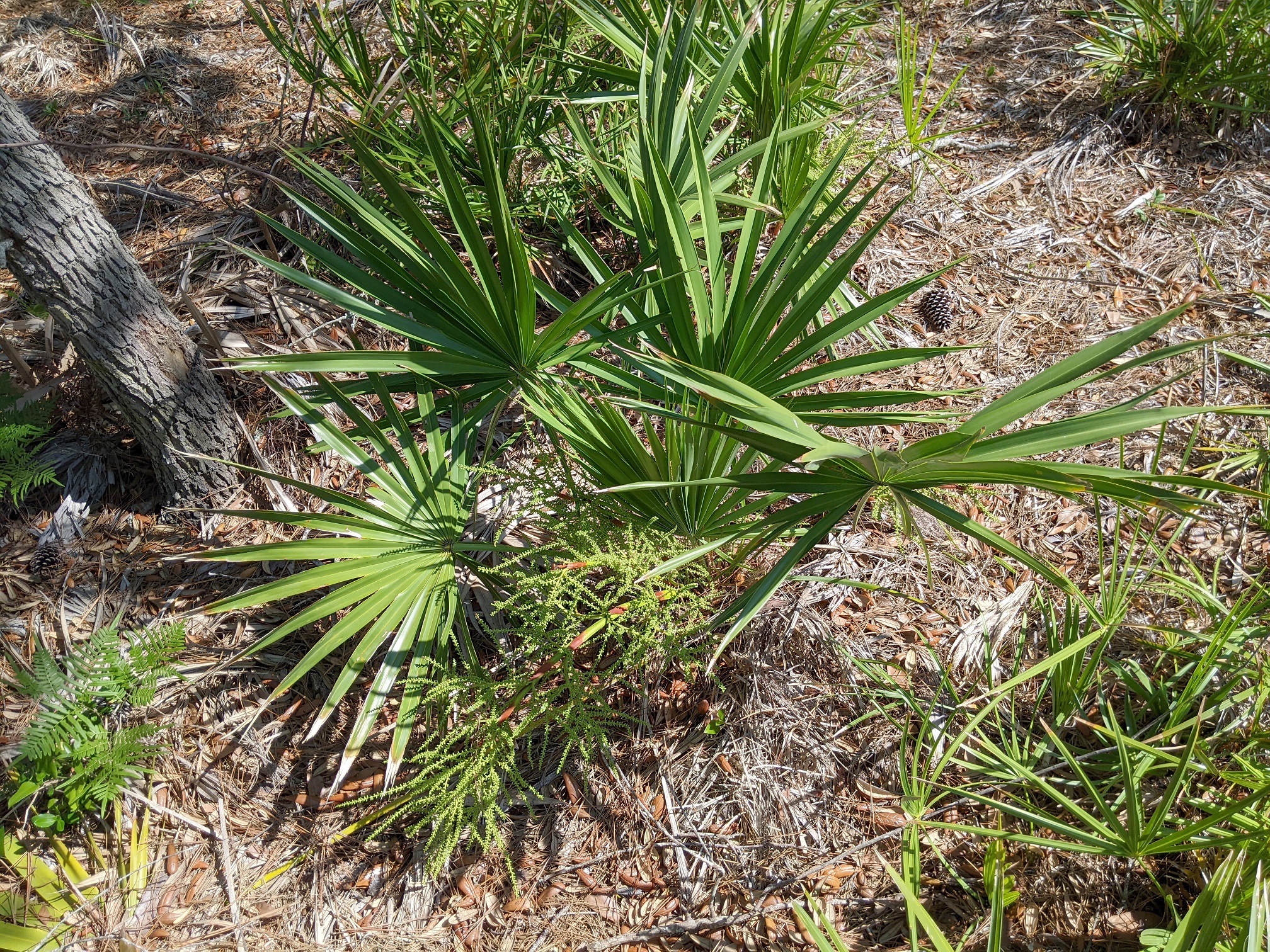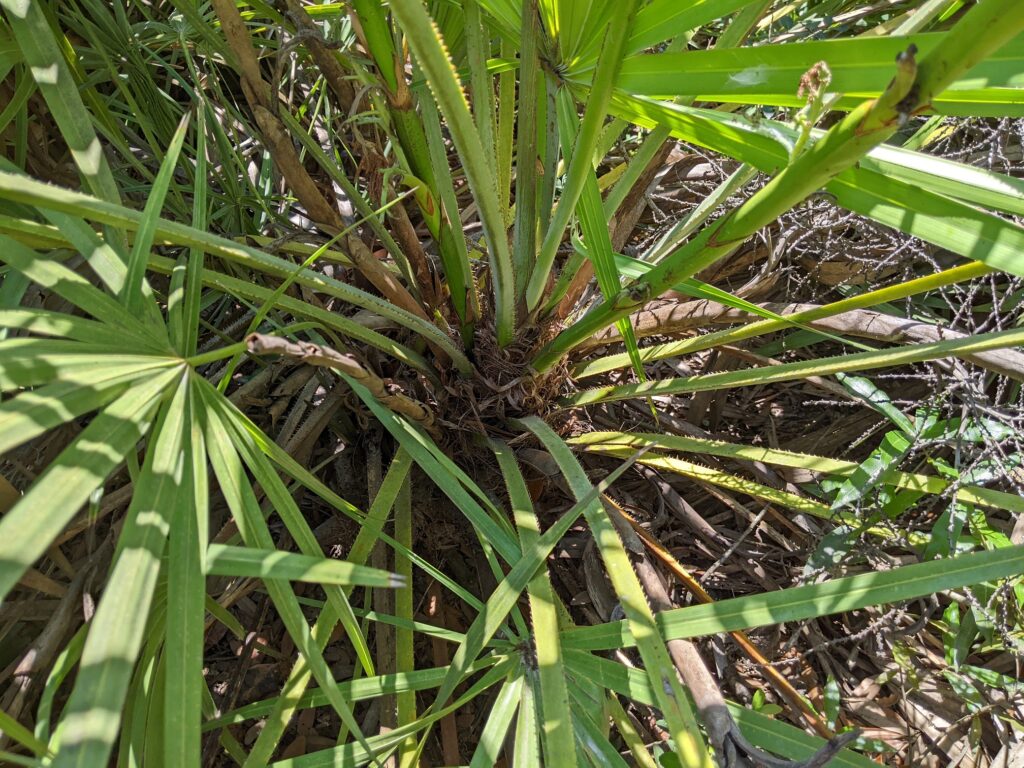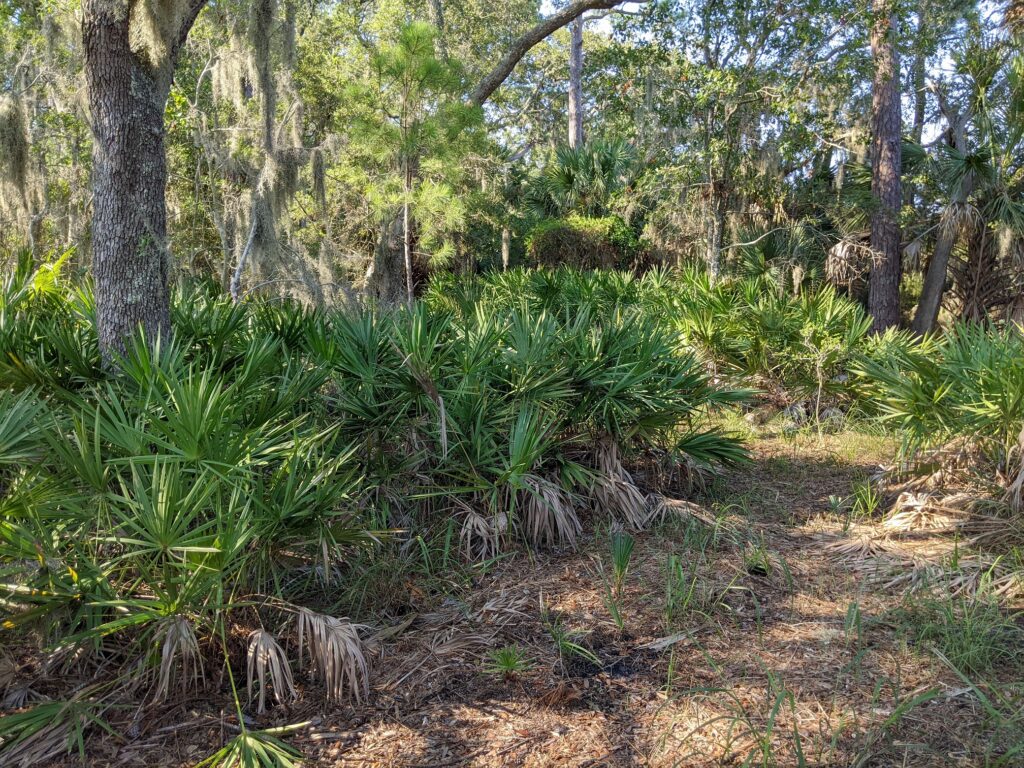


This week for Flora and Fauna Friday, we have a compact, clustering cousin of Carolina’s iconic palm, the Saw Palmetto (Serenoa repens).
Saw Palmetto is a small species of Palm found on the coast of the Southeastern United States, from the Mississippi River, to the South Carolina Lowcountry, and down throughout Florida. Edisto Island is on the extreme edge of its natural range, with at least a handful of healthy populations existing along the west edge of our Island. Saw Palmetto is long-lived and highly tolerant of salt, drought, and poor soils, just like Cabbage Palmetto. However Saw Palmetto does not tolerate freezing temperature well and so on Edisto Island is limited to hammock islands and other thermally insulated maritime fringe habitats. The overall appearance of Saw Palmetto is very much Palmetto-like. It has fronds with a circular blade radiating out from one central point, stringy bark, and a spherical crown. However, its fronds are much smaller than even Dwarf Palmetto and their stems are lined with sharp, hooked teeth. This makes any attempt to walk through a thicket of Saw Palmetto a dicey, and often slice-y, maneuver. Furthermore unlike our other two native Palmettos, Saw Palmetto has multiple stems, spreads clonally, and will regenerate from the roots if it’s leading bud is destroyed. This is an adaptation to the historically prevalent wildfires in Florida and the coastal Southeast. Research indicates that some clonal colonies in Florida may be several thousand years old. When not regularly set alight, Saw Palmetto grows slowly into a large bush that’s as tall as it is wide, usually about six to eight feet tall in our area. Like our other Palmettos, it blooms in spring with huge clusters of small, creamy-white flowers that are scoured for pollen and nectar by bees and other pollinators. The pollinated flowers mature into small black drupes that are eaten and dispersed by birds. You may have heard of Saw Palmetto Extract, which comes from the fruit of Saw Palmetto. (As of this writing, there is no conclusive evidence that this extract can treat any medical conditions in humans.)